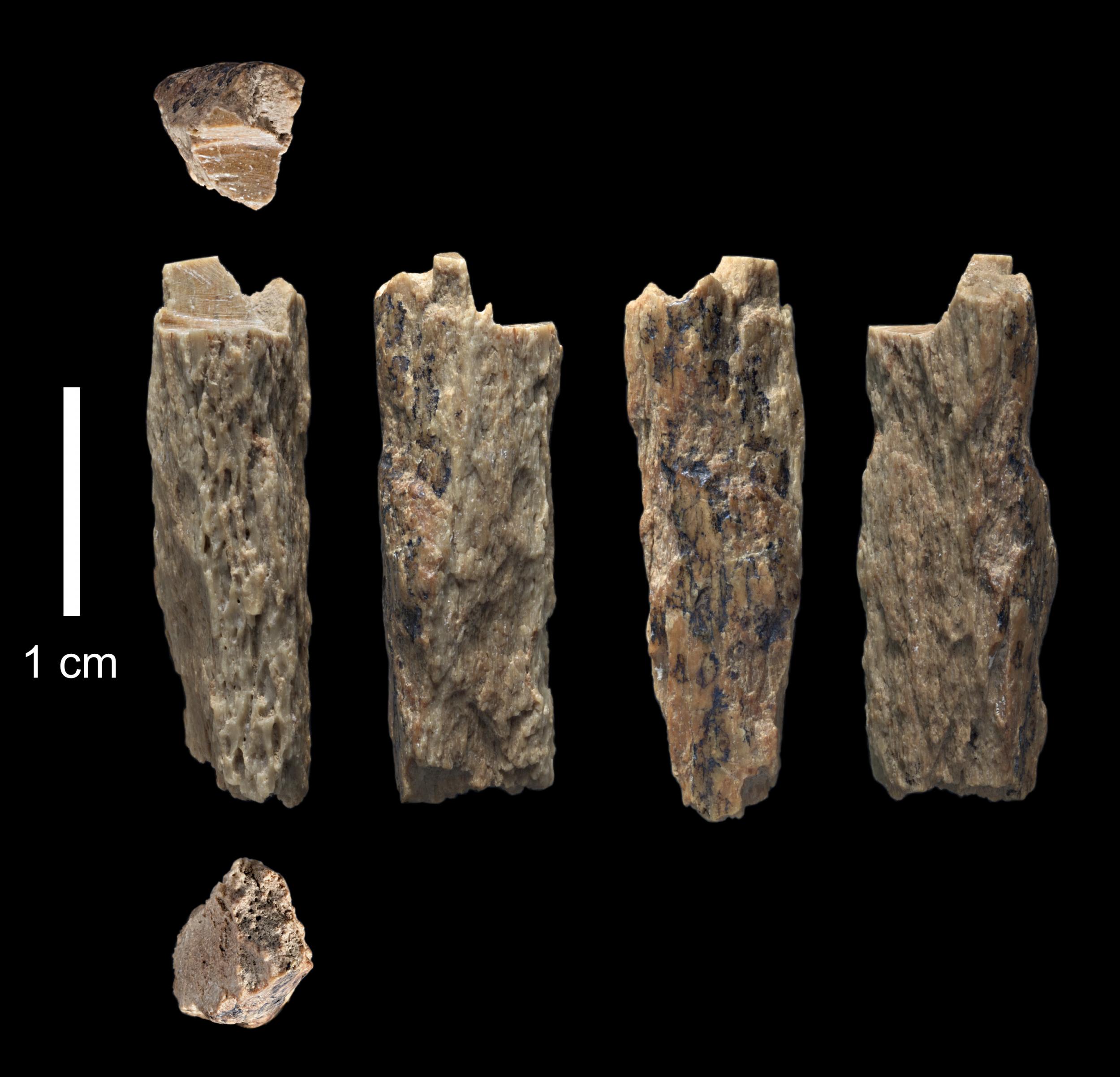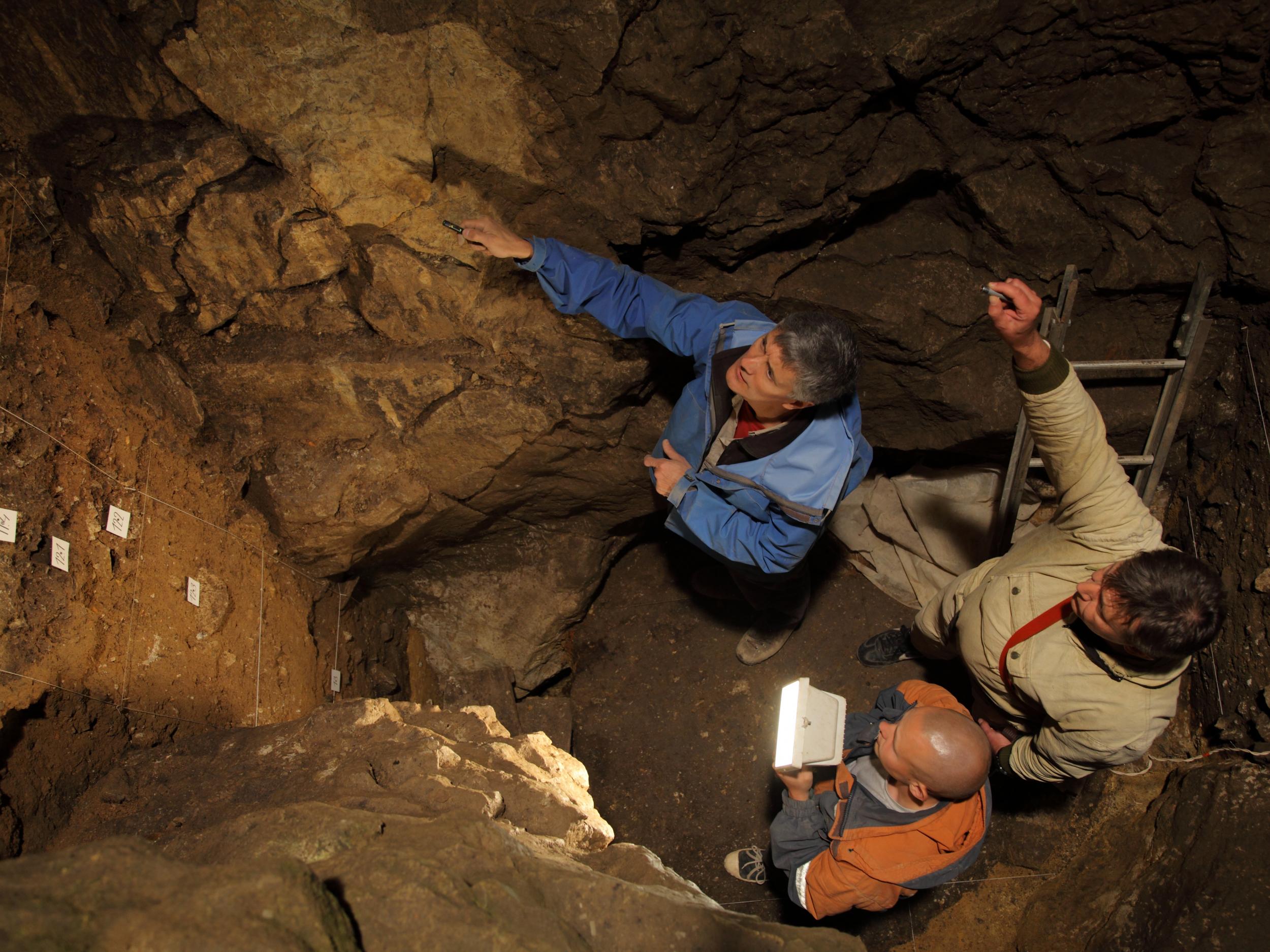The Independent's journalism is supported by our readers. When you purchase through links on our site, we may earn commission.
Remains of hybrid human girl with Neanderthal mother discovered in Siberian cave
'Clearly they weren’t racist,' says scientist of evidence indicating ancient interbreeding between human species
A bone belonging to a very unusual teenage girl has once again shaken up our understanding of human history.
Around 50,000 years ago, Eurasia was home to two very distinct groups of humans, separated by thousands of years of evolution – the Neanderthals and the Denisovans.
Now analysis of a bone fragment from a Siberian cave has revealed the girl it came from had a Neanderthal mother and a Denisovan father.
Scientists have been gradually unpicking the complicated relationships of our distant ancestors, using ancient DNA.
Increasingly, these efforts have suggested few displayed any form of prejudice when selecting partners.
"But I never thought we would be so lucky as to find an actual offspring of the two groups,” says Dr Viviane Slon, one of the researchers behind the discovery at the Max Planck Institute for Evolutionary Anthropology.

Denisova Cave, which is so far the only place physical evidence of the mysterious Denisovans been unearthed, has proved to be a treasure trove of human history.
The bone fragment, “Denisova 11”, that the new study was based on was discovered there by Russian archaeologists in 2012 before being taken to Germany for genetic analysis.

The key message from the new discovery, outlined in the journal Nature, is that not only was interbreeding happening, it was happening a lot.
“To find an actual hybrid of such a mating in a still sparse fossil record must surely indicate that these matings could not have been rare events, at least when the populations met each other, under whatever circumstances,” said Professor Chris Stringer, an expert in human origins based at the Natural History Museum, who was not involved in the research.
Analysis of the genome also revealed that the Denisovan father of the girl, who was 13 at the time of death, had at least one Neandertal ancestor further back in his family tree, meaning there were multiple instances of interbreeding within this one family.

"Neanderthals and Denisovans may not have had many opportunities to meet,” said Professor Svante Paabo, a pioneer in the exploration of ancient human DNA who also worked on the new study.
“But when they did, they must have mated frequently – much more so than we previously thought."
Professor Mark Thomas, an evolutionary geneticist at University College London who was not involved in the research, said the evidence for interbreeding between ancient human lineages can be seen to this day in the DNA of modern people.
Around 5 per cent of DNA in some people today, particularly those from Papua New Guinea, is thought to be Denisovan in origin.
Ample evidence of breeding between humans and Neanderthals has emerged in recent years, including a modern human specimen from Romania who had a Neanderthal ancestor just four generations back.
“The really interesting thing is we seem to have caught one of them in the act, again” Prof Thomas told The Independent.
While Neanderthals and Denisovans were similar enough to produce offspring, these ancient human lineages would have been far more genetically distinct than any human groups alive today.
Prof Thomas added: “Clearly they weren’t racist – so it’s a lesson from our distant relatives.”
Join our commenting forum
Join thought-provoking conversations, follow other Independent readers and see their replies
Comments
Bookmark popover
Removed from bookmarks